Cauvigny to Chantilly
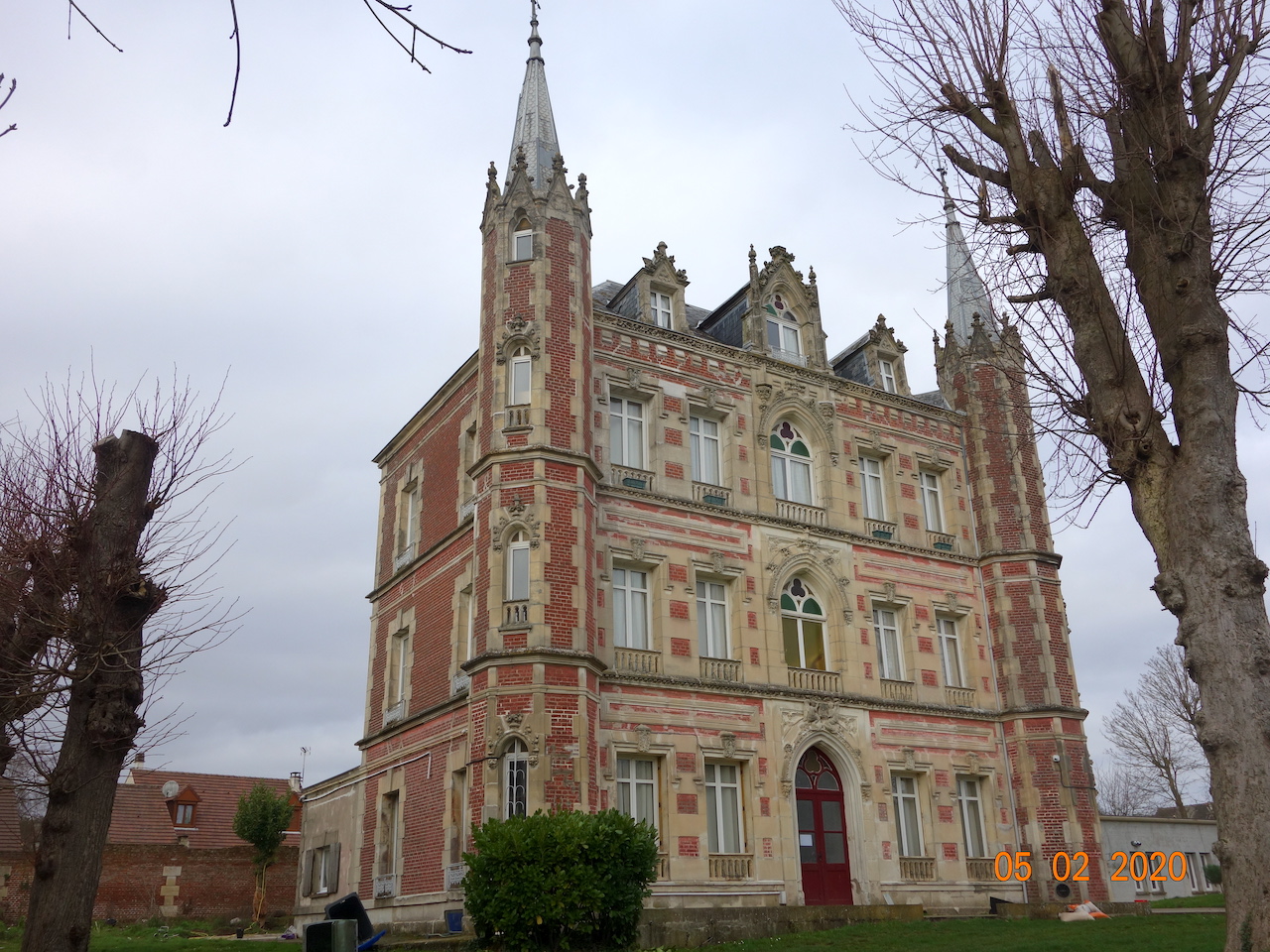
Hauts-de-France
5. Cauvigny to Chantilly
Medium
6h30
25,4km
+310m
-337m
Step
Embed this item to access it offline
Your stage starts in a valley that goes from Beauvais to Chantilly, you will walk in the cereal fields. You cross the natural site of the Bois de Mello before arriving in Saint-Leu-d'Esserent on the banks of the Oise, the town of Chantilly and its rich heritage is open to your curiosity.
8 points of interest
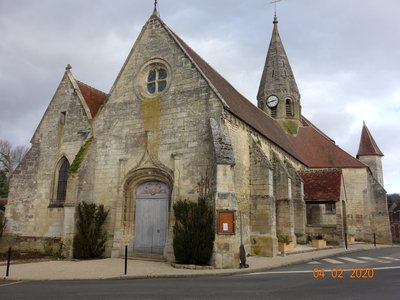
L’église Saint-Martin de Cauvigny - Association Colomban en Brie TouristSaint-Martin Church in Cauvigny
The construction of St. Martin's Church dates back to at least the 11th century, and the southern wall of the nave includes remains from this period. The church is mainly in the late Gothic style, and dates mainly from the first third of the 16th century, but there are interesting elements from two building campaigns in the 12th century. These are firstly three archaic warhead vaults from the 1140s, without their supports, in the north side aisle; then the south crosspiece from the 1150s / 1160s, which was taken up again in the Flamboyant period; and above all an elegant octagonal bell tower from the late 12th century with a lantern topped by a stone spire, which is one of the most beautiful representatives of this type of bell tower in the region. The bell tower, the southern crosspiece, the polygonal stair turret and the high apse from the 1520s form a picturesque ensemble.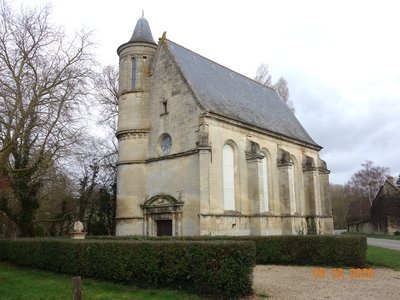
Chapelle Saint-Restitude à Cauvigny Château-Rouge (17e siècle) - Association Colomban en Brie TouristSainte-Restitute Chapel in Cauvigny Château-Rouge
The Sainte-Restitude chapel, built in 1625 for the account of Gilles de Fay, Lord of Fercourt, shortly after the dismantling of the fortress. Baroque architecture reigned at that time, but it did not spread much in the Oise, and the chapel draws its references from the flamboyant style and the Renaissance.
The cult of Saint Restitude, martyrdom in North Africa in 303, has been practiced in Picardy since the 9th century. At that time, the Count of Moreuil, Lord of Picardy, brought back from Rome the relics of Saint Restitude which were scattered during the wars.
In 2019 the chapel was put up for sale by the commune.
Ancienne grange aux Dîmes à Ully-Saint-Georges (15e siècle) - Association Colomban en Brie HistoricalOld Tithe Barn in Ully-Saint-Georges
The old tithe barn, north of the church, dates from the 15th century and belonged to the abbey of Saint-Denis. The Abbot's tithes were stored in this building. The south-western corner is flanked by a small three-storey tower on a round plan, which was to serve as a guard post, since there is no intercommunication between the attic of the barn and the tower.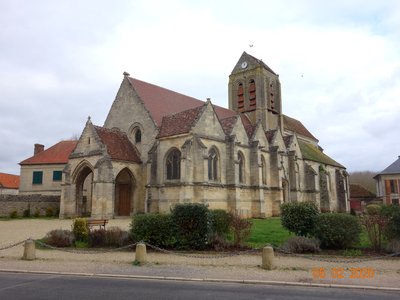
Église Saint-Georges à Ully-Saint-Georges - colomban en Brie TouristSaint-Georges Church in Ully-Saint-Georges
The architecture of St. George's Church reflects three different eras, but to the right of the western portal, a section of stone wall remains, arranged in a herringbone pattern, which predates the Romanesque church, dating from the 11th century.
The south aisle in the flamboyant Gothic style of the first half of the 16th century is beautifully crafted. Each of the five bays has its own gabled roof and a window with a flamboyant latticework, except for the fourth, which has a portal with a brace over it.
There is no aisle to the north, except for a small bay to the west, facing the north transept crosspiece, to compensate for the reduced width of the nave and aisle-south side in relation to the latter. The transept, the first bay of the choir and its two aisles represent the oldest parts of the church and date back to the 1130s / 1140s.
. A choir with three apses is exceptional for a rural church of rather modest dimensions, and its elegance and quality of execution are remarkable. The gabled bell tower above the transept crossing and the porch in front of the western portal are almost contemporary with the choir.
Inside, several statues date from the 16th century.
To the right of the church, the old post deserves a look at the past.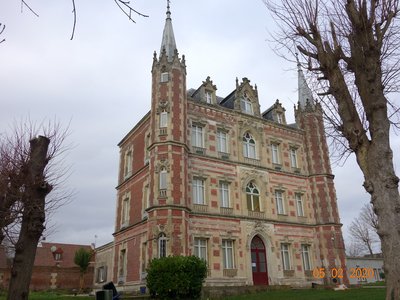
Le château d’Ercuis (19e siècle) - Association Colomban en Brie HistoricalErcuis Castle
The castle was built for the Abbot Adrien Céleste Pillon, priest of Ercuis, in 1837.
In 1867 the parish priest founded a company "of artistic goldsmithery, enamels in relief, copper, silver, gold and wire drawing" which specialized in religious goldsmithery using a new process of electrolytic deposition "Voltaic Pantography". The company prospers by adding tableware.
A working-class city, still visible with its red brick walls, is built and the labour force arrives. In 1880, Ercuis opened a shop in Paris and gradually abandoned religious goldsmithing in favour of tableware. The village grew considerably around the factory and its workers' housing estate.
Today the House of Ercuis is renowned for its goldsmith's and silversmith's work, which is well known in the culinary world.
In the 20th century, the castle was in turn a retirement home and then a seminar centre for the Korean Evangelical Church.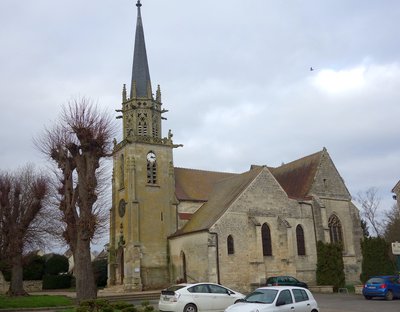
L’église Saint-Nicolas à Ercuis - Association Colomban en Brie TouristSaint-Nicolas Church in Ercuis
The parish church of St. Nicholas once adjoined a priory of the order of St. Augustine, dedicated to St. Louis, of which the entrance portal and a dovecote remain. The rather confused mass of the building is dominated by an elegant and interesting neo-Gothic bell tower, built on the façade. A first floor with a square floor plan, the corners of which are punctuated with statues and gargoyles, is followed by an octagonal second floor with corners also marked by gargoyles. Pinnacles and a high spire in the roofing framework crown the whole.
From the church proper, the transept and the choir - 16th century but very restored - can be seen in the nave and its aisles. The latter are also of ancient origin and are too much restored or rebuilt to allow a reliable analysis, especially with regard to the curious ribbed vault that covers the nave.
The pentagonal choir and the transept belong to a very common type of construction at the end of the Gothic style: prismatic profile ribs falling on lamp heads sculpted with foliage, windows with flamboyant latticework - particularly rich in the transept - surmounted by a large section of bare wall. The two beautiful sculpted friezes that adorn the west piers of the crossing are particularly noteworthy. The 19th century stained glass windows also deserve attention.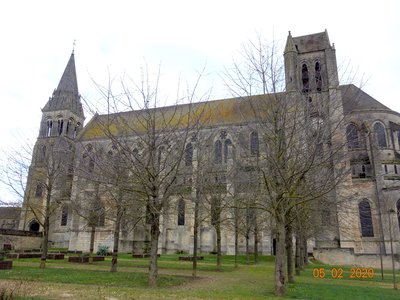
Le côté sud de l’église prieurale de Saint-Leu-d’Essertent - Association Colomban en Brie TouristThe priory church of Saint-Nicolas in Saint-Leu-d'Esserent
For 900 years, the church of Saint-Nicolas has overlooked the Oise valley from the top of a rocky promontory, like a fortified castle. It offers visitors an imposing view like a cathedral, corresponding perfectly to the style of the Cluniac foundations at the beginning of the 12th century.
Work continued around 1160 with the construction of the chevet. In the 13th century, a Gothic nave connects the ensemble. This evolution makes the Saint-Leu priory church a perfect illustration of the transition from Romanesque to Gothic.
The church is 70m long, 21m wide and 20m high under the vault: its dimensions and ornamentation are those of a cathedral.
Inside the building, the visitor can notably discover the baptismal font from the 16th century, Renaud de Dammartin's bed, the altarpiece of Saint-Nicolas, dated from the 14th century.
The current stained glass windows were made in the 50s and 60s.
The priory has been disused since the Revolution and the church has retained its majestic silhouette while the conventual buildings were sold.
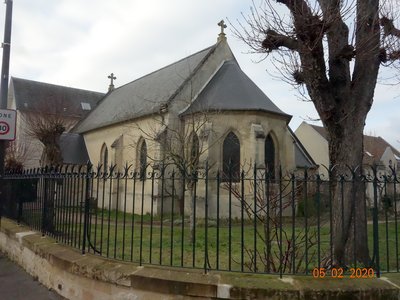
Église St-Peter à Chantilly - Association Colomban en Brie TouristThe town of Chantigny
Chantilly is known for its château, which houses the collections of the Musée Condé, and for its whipped cream. It is also internationally renowned for its horse-riding activities: in addition to its racecourse, where two prestigious horse races are held, the Jockey Club Prize and the Prix de Diane, the town and its surroundings are home to the largest racehorse training centre in France.
Intimately linked to the de Montmorency family from the 15th to the 17th century, then to the de Condé family from the 17th to the 19th century, Chantilly developed around its castle and its outbuildings. Its town planning only dates back to the 18th century. At the beginning of the 19th century, it became a small pioneering industrial centre, notably in the production of porcelain and lace, but above all a privileged place of leisure and holiday for the aristocracy and the artistic world, as well as the place of residence of an English community, linked at the time to the world of horses, at the grateful invitation of the Duke of Aumale, and still today strong with 350 families. The Anglican Church of St Peter's is worthy of note. On the rue du connétable, one will pass in front of the Spoelberch Foundation of Lovenjoul which has kept the name of the patron who had donated his library to the Fondation de France in 1905.
In the centre of the hemicycle opening onto the racecourse stands the statue of the Duke of Aumale by Jean Léon Gérôme. Henri D'Orléans Duc D'Aumale was the son of Louis Philippe and Queen Marie Amélie. He had the Château de Chantilly rebuilt to house the rich collections of the Musée Condé. He donated his possessions to the Fondation de France.
Notre-Dame de l'Assomption Church This building was commissioned by the great Condé and is the work of the architect Jules Hardouin-Mansart. The construction, completed in 1691, possesses architectural characteristics typical of the French classical architecture of the Counter-Reformation: reference to Antiquity, symmetrical composition, study of proportions, balance and sobriety of the decorations.
More information Wikipedia
Description
In front of the church of Cauvigny take the D 55, rue du Général de Gaulle, first street on the left, rue du Château Rouge.
- Left on a dirt road in the extension of the street, rue du Four à Chaux, chemin d'Ully-Saint-Georges in Cauvigny, right at the crossroads with rue Henry Aiciati impasse du Jeu d'Arc, straight on chemin de la Chapelle Saint-Pierre in Château-Rouge.
- Stay on your left and cross chemin de Mouy au Bois-Morel, straight ahead, chemin de Cauvigny to Ully-Saint-Georges, right at the junction with D44, rue de Beauvais, at the entrance of Ully-Saint-Georges, first street on the right, rue de Jousin, right, rue de Beauvais continue grand Rue D 44
- Turn left on the D 44 rue de Senlis at the exit of the town, turn right on the dirt road before the body shop, keep on your left and go straight ahead, cross the D 929, at the dirt road crossroads on the left.
- Turn left on the second road in the fields, cross the D44, straight ahead in the wood, at the crossroads on the right stay on your left at the crossroads, straight ahead at each crossroads in the wood.
- Turn right at the crossroads in the fields, left at the next crossroads in the direction of Saint-Leu-d'Esserent, turn right onto the D12, rue d'Hardillière, straight ahead at the crossroads, at the roundabout take the second street on the left rue Jean-Jaurès, at the crossroads turn right, cross the railway, rue de l'Hôtel-Dieu, cross the Oise river.
- After having skirted the campsite, take the second dirt road in the woods on the right, stay on your left at the crow's feet, on the left rue des Carrières, at the crossroads straight on rue de la Chaussée, on the right and on the left chemin du Viaduc, in Chantilly pass under the railroad track, rue Guilleminot.
- At the crossroads go under the Richard-Lenoir Gate, on the right cross the Nonette River, then the Saint-Jean Canal, turn left on chemin du canal Saint-Jean, right on avenue du Bouteiller, second street on the left, rue du connétable you arrive at the Notre-Dame de l'Assomption church in Chantilly.
- Departure : Saint-Martin Church, Rue de Mouy, 60 730 Cauvigny
- Arrival : Notre-Dame de l’Assomption Church, 5-7 rue du connétable, 60 500 Chantilly
- Towns crossed : Hauts-de-France
Altimetric profile
Report a problem or an error
If you have found an error on this page or if you have noticed any problems during your hike, please report them to us here:





